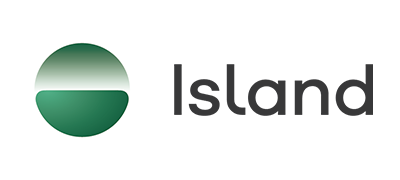
Island
アイランド
ヘルスケア業界におけるセキュアで生産的な業務への道
摩擦を減らし、患者のプライバシーを犠牲にせずにアクセスを改善する

はじめに
医療技術の発展は、医師が患者の健康を診断、治療、監視する方法に革命をもたらしました。
しかし、これらの発展によって作り出される膨大な量の患者データは、新たな課題を生み出しました。
このデータを医療提供者、病院、診療所間で共有する際に生じる摩擦は、診察における不必要な遅延や重大なミスにつながる可能性があります。さらに、プライバシーとセキュリティに関する懸念により、患者の機密性を保護しながら、すべての医療提供者が必要なときに必要な情報にアクセスできるようにする統一システムを構築することが困難になっています。
目次
1.医療業界におけるもっとも重要な課題
1-1. 医療データをめぐる壁は崩れつつある
1-2. 人員不足、臨床的燃え尽き症候群、従業員の定着
1-3. テクノロジーは医療プロセスにおける摩擦を増大させる可能性がある
1-4. サイバー攻撃の高度化
1-5. 規制遵守への対応
2.ヘルスケア業界がさらされる脅威
3.ヘルスケア業界が進むべき道
3-1. 摩擦を減らす
3-2. 保護の維持
4.Island で先導するエンタープライズブラウザ
5.Island を使用すると、医療機関は多くの重要なユースケースに対処できます
1.医療業界におけるもっとも重要な課題
1-1. 医療データをめぐる壁は崩れつつある
医療におけるデジタルトランスフォーメーションは、小売医療や医療従事者間のリモート運用やコラボレーションの増加などの新しいサービスを可能にすることで、患者にとってより迅速でより良い医療を提供できるようになりました。より多くの外部関係者が内部システムやデータにアクセスできるようになり、医療機関は規制された患者データへのアクセスとプライバシーのバランスを取ることに苦労しています。
1-2. 人員不足、臨床的燃え尽き症候群、従業員の定着
医療サービスの需要が増加し続ける中、資格を持つスタッフの不足が喫緊の課題となっています。これは提供される医療の質に影響を与える可能性があり、大きいストレスと仕事量の従業員の離職に影響を与えるため、人員不足の問題をさらに悪化させています。
1-3. テクノロジーは医療プロセスにおける摩擦を増大させる可能性がある
サポートテクノロジーを活用することで、より良い診断を可能にし、サービスの柔軟性とスケーラビリティを向上させることができます。一方、医師や看護師が新しいシステムのトレーニングや、さまざまな画面や独自のインターフェイスとのやり取りに費やす時間が増え、結果として患者とのやり取りに費やす時間が減少してしまっています。
1-4. サイバー攻撃の高度化
医療は依然として、サイバー攻撃の標的として最も高い産業の1つです。現代の攻撃者は、最も一般的に展開されている防御をよく認識しており、適応するために戦術を継続的に更新しています。今日の洗練されたフィッシング手法、ランサムウェアのキャンペーン、ビジネスメールの侵害攻撃は、医療従事者を危険にさらしています。
1-5. 規制遵守への対応
医療業界は厳しく規制されており、患者のプライバシーから請求業務に至るまで、多数の規制が適用されています。コンプライアンス要件は常に進化しているため、組織が規制の変化に対応し、コンプライアンスを維持することは困難となっています。これらの規制を遵守しないと、厳しい金銭的罰則、評判の低下、さらには法的措置に至る可能性があります。
2.ヘルスケア業界がさらされる脅威
2022 Healthcare Data Breachレポート※(1)
2022年には、500件を超える記録のヘルスケアデータ侵害が707件報告されており、2021年の715件という記録的なデータ侵害とほぼ同等であった。2022件のデータ侵害のうち、実に56%が第三者によるものであった。
IBM Security:Cost of a Data Breach Report 2022 (IBMセキュリティ:データ侵害のコストレポート) ※(2)
IBMによると、データ侵害に関連するコストが最も高いのはヘルスケア業界である。医療データ侵害の平均コストは1000万ドルを超え、2020年から42%増加したと報告されている。
メイヨー・クリニックの野心的なデータプラットフォームは、医療費を削減し、患者の健康と寿命を改善することを目的として、新しい研究を支援するために医療データを集約する。
EyeMed Vision Care、医療データ流出で450万ドルの罰金※(4)
不十分なID管理とアクセス管理が、EyeMed Vision Careにおける210万件の医療記録流出の一因となった。この違反により、HIPAA違反で多額の罰金が科されたほか、ニューヨーク州金融サービス局のサイバーセキュリティ規制違反で追加の罰金が科された。
3.ヘルスケア業界が進むべき道
医療機関は、データ管理、規制コンプライアンス、人員配置、およびテクノロジー導入に関連する多くの課題に直面しています。これらの課題を克服するには、患者データのセキュリティと管理を維持しながら、患者、医療提供者、組織を含むさまざまな利害関係者間の障壁を壊すことが重要です。
3-1. 摩擦を減らす
医療機関は、新しいクラウドベースのサービスに傾注し、重要な情報に安全にアクセスするための障壁を減らすことで、ケアを改善し、フラストレーションと従業員の離職を減らすことができます。
3-2. 保護の維持
デジタルトランスフォーメーションを推進し、新しいSaaSサービスを採用する場合、医療機関は、患者データを保護し、コンプライアンスを維持するために、主要なプロセスに対する効果的な制御とガバナンスを維持する必要があります。
4.Island で先導するエンタープライズブラウザ
Islandはエンタープライズブラウザの先駆者であり、基本的に安全でありながら、仕事がスムーズに流れる理想的なエンタープライズワークプレースです。金融サービス組織のコアニーズがブラウザ自体に自然に組み込まれているため、Islandはユーザーが期待するのと同じスムーズなChromiumベースのブラウザエクスペリエンスを提供しながら、最後の1マイルを完全にコントロールし、可視性とガバナンスを提供します。
5.Island を使用すると、医療機関は多くの重要なユースケースに対処できます
- 統合されたDLP、安全なストレージ、およびスクリーンショット保護、コピー/ペースト制御、データマスキングなどの動的なラストワンマイル制御により、すべてのSaaSおよびWebアプリケーションで機密情報を保護します。
- すべてのアクションの完全な監査記録とデータ漏洩を防止するラストワンマイル制御により、請負業者またはサードパーティによる医療アプリケーションおよびデータへの安全なアクセスを可能にします。
- アプリケーション境界を使用したBYODまたはBYOPCアクセスにより、機密データが医療システムの制御下にとどまることを保証します。
- 悪意のあるコンテンツ、フィッシングの試み、またはその他のWebベースの脅威をブロックする安全なブラウジングと、インシデントを調査するための完全なフォレンジックログを提供します。
- 従業員の業務を改善し、一般的なタスクを高速化し、患者と過ごす時間を増やすためのユーザーエクスペリエンスを提供します。
- ユーザーエクスペリエンスの強化により、従業員のオンボーディングを改善し、一般的なタスクを高速化し、ロボティックプロセスオートメーション (RPA) によってビジネスロジックを自動化します。
医療機関は、Enterprise Browserで標準化することで、IT運用を簡素化し、セキュリティ体制の強化を実現します。エンドユーザーにも、必要なアプリケーションへの迅速なアクセスと、高速で使い慣れたブラウジングインターフェイスというメリットを提供します。1つの製品がセキュリティ、IT、エンドユーザーの3つのグループすべてに提供できることは非常にまれなことです。
※(1)出典:https://www.hipaajournal.com/2022-healthcare-data-breach-report/
※(2)出典:https://www.ibm.com/reports/data-breach
※(4)出典:https://healthitsecurity.com/news/eyemed-vision-care-to-pay-4.5m-to-ny-over-healthcare-data-breach
お問い合わせ・資料請求
株式会社マクニカ Island 担当
- TEL:045-476-2010
- E-mail:Island-sales-i@macnica.co.jp
平日 9:00~17:00